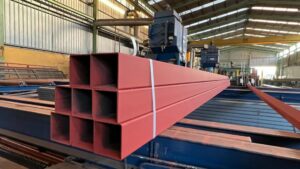Moody’s Investors Service says steel prices globally likely peaked in 2021 but will remain high in 2022 relative to historical averages.
According to Moody’s, steel prices decreased at the start of this year because replenished inventories boosted supply, and supply-chain disruptions reduced demand. The prices then surged in late March on Russia’s invasion of Ukraine because both countries are sizable exporters of steel inputs such as pig iron, metallurgical coal, iron ore and steel scrap, as well as semi-finished and finished steel products, oil, and natural gas.
The countries are now unreliable sources of these materials, which caused their prices to surge, Kallanish understands.
It adds that higher energy costs and the two countries’ lower exports of semi-finished steel products led to steel-production curtailments and lower finished steel supplies in other markets.
It also says steel and raw material prices have begun to soften as panic buying recedes, supply-chain issues reduce global demand, COVID-related lockdowns reduce consumption in China, and inflationary cost pressures and higher interest rates weigh on sentiment and economic growth.
“Steel prices are likely to soften further but remain historically strong in most regions this year,” it says.
According to Moody’s, prices could also remain above historical levels in the longer term for two reasons: increased demand for steel scrap and metallics as steel producers focus on reducing carbon emissions; and less competitive steel sector dynamics from consolidation in some regions.
Siew Mung Tan Malaysia






